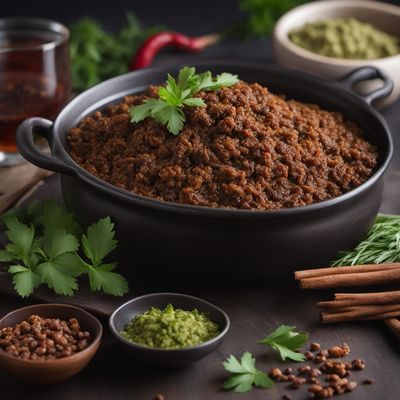
Ingredient
Pollack
Delicate White Fish
Pollack is a white fish with a mild and slightly sweet flavor. Its flesh is tender and flakes easily when cooked. The texture is moist and succulent, making it an excellent choice for grilling, baking, or frying. This fish is often compared to cod or haddock in terms of taste and texture.
Origins and history
Pollack is native to the North Atlantic Ocean and is commonly found in the waters of the United States, Canada, and Europe. It has been a popular food source for centuries, with evidence of its consumption dating back to ancient times. Pollack is highly valued for its abundance and affordability, making it a staple in many coastal communities.
Nutritional information
Pollack is a good source of lean protein, omega-3 fatty acids, and essential minerals such as selenium and phosphorus. It is also low in calories and fat, making it a healthy choice for seafood lovers. However, it may contain mercury, so it is recommended to consume it in moderation, especially for pregnant women and young children.
Allergens
Pollack may cause allergic reactions in individuals with a fish allergy. It is also important to note that pollack may contain mercury, so individuals should limit their consumption, especially if they are pregnant or breastfeeding.
How to select
When selecting pollack, look for fillets or whole fish that have firm, translucent flesh with a mild sea-like aroma. The skin should be shiny and free from any discoloration or blemishes. If purchasing frozen pollack, ensure that it is properly sealed and has not been thawed and refrozen.
Storage recommendations
To maintain the freshness and quality of pollack, store it in the refrigerator at temperatures below 40°F (4°C). If purchased frozen, keep it in the freezer until ready to use. Cooked pollack should be consumed within 2-3 days. To extend its shelf life, you can also freeze cooked pollack for up to 3 months.
How to produce
Pollack is primarily caught in the wild, but it can also be farmed in some regions. However, it is not commonly cultivated by amateur fishermen or aquaculture enthusiasts due to its specific habitat requirements and commercial availability.
Preparation tips
Pollack can be prepared in various ways, including grilling, baking, frying, or steaming. It is often used in fish stews, chowders, fish cakes, and fish tacos. Pollack can also be breaded and fried to make fish and chips or used as a filling for sushi rolls. Its mild flavor pairs well with citrus, herbs, and spices, allowing for versatile culinary creations.
Substitutions
Cod, haddock, and whiting are suitable substitutes for pollack, as they have similar taste and texture. However, keep in mind that each fish may have slight differences in flavor and cooking time.
Culinary uses
Pollack is commonly used in fish and chips, fish stews, and fish tacos. It is also a popular choice for making fish cakes and fish burgers. In Korean cuisine, pollack is often dried and used to make fish jerky or added to soups and stews for added flavor.
Availability
Pollack is commonly available in North America, Europe, and parts of Asia. It is commonly caught in the waters of the United States, Canada, Norway, and Russia. It is also imported and exported to various countries for commercial purposes.

